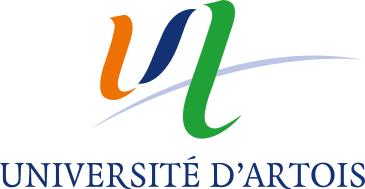-
Health and Nutrition
-
Societal and economic transition & Risk management
Physical Activity, Muscle, Health (APMS)
Research team
Our team possesses scientific and methodological expertise to study different aspects of adaptations and dysfunctions of muscular, neuromuscular, respiratory and metabolic functions related to physical activity or inactivity. We aim to understand the fundamental mechanisms underlying muscle transformations during functional atrophy, to deepen our knowledge of the etiology and pathophysiology of respiratory system limitations to muscular exercise, and to propose therapeutic approaches to improve the health of subjects at risk of developing, or presenting metabolic diseases (type 1 diabetes or obesity). We are open to all academic and industrial collaborations and propose services in line with our expertise.
- Justine Lepoutre
-
Serge Berthoin
Team Manager
413, avenue Eugène Avinée
Campus Santé, Université de Lille
59120 LOOS
Effectif
Effectif total : 59
Personnel de recherche : 30
Personnel d'appui à la recherche : 9
Skills
• Adapted physical activity
• Respiratory adaptations and dysfunctions during exercise
• Metabolic adaptations and dysfunctions during exercise
• Adaptations and dysfunctions of the neuromuscular function
• Physical and Sports Education
• Training
• Physical literacy
• Neuromuscular physiology
• Sport
Example(s) of projects
• We have shown that adults with type 1 diabetes have a defect in vasodilation of muscle-irrigating vessels during exercise 🡭, probably related to a deficiency of L-arginine 🡭. This prompts the development of nutritional supplements of natural origin capable of increasing L-Arginine levels (e.g. watermelon)
• We have shown the importance of assessing physical fragility in patients with COPD and chronic respiratory failure in order to personalize and optimize the approach to home respiratory rehabilitation for these patients 🡭
• Our work showed that practice formats had different impacts on adolescents in terms of engagement in physical activity and perceived enjoyment 🡭
Example(s) of publications
• Heyman E, Daussin F, Wieczorek V, Caiazzo R, Matran R, Berthon P, Aucouturier J, Berthoin S, Descatoire A, Leclair E, Marais G, Combes A, Fontaine P, Tagougui S. Cardiovascular and Metabolic Risk - Muscle oxygen supply and use in type 1 diabetes, from ambient air to mitochondrial respiratory chain: Is there a limiting step? Diabetes Care 2020, 43 (1) : 209-218 🡭
• Fourneau J, Canu MH, Cieniewski-Bernard C, Bastide B, Dupont E. Synaptic protein changes after a chronic period of sensorimotor perturbation in adult rats: a potential role of phosphorylation/O-GlcNAcylation interplay. J Neurochem. 2018, 147 (2) : 240-255 🡭
See the complete list of publications here.
Collaborations/Partners/Scientific clients
University of Artois, ULCO, Sorbonne University, University of Montpellier, ...
International:
University of Montreal (Canada), Stanford University (USA), Edinburgh Napier University (UK), Vrije Universiteit Brussel (Belgium)
Collaborations/Partners/Private Clients
Applications sectors
- Health / wellness
- Education / Training
- Sports / Leisure
- Science / Research
Services provided
- Design and testing of innovative therapeutic approaches to reduce the deleterious effects of prolonged bed rest (muscle atrophy, postural instability...).
- Identification of potential therapeutic targets.
Physical activity and sport.
- Analysis of levers and barriers to physical activity
- Design of physical activity promotion programs according to populations, contexts and lifestyle habits
- Use of digital technology to promote physical activity
- Management and monitoring of training load and fatigue
- Objective and subjective sleep measurement
Training offers
- Questionnaire design and validation
- Design and validation of physical tests
- Multivariate statistical analyses and typology detection
- Individual and group interview techniques
- Measurement of physical activity education level (physical literacy)
- Objective measurement of spontaneous physical activity level, in ecological conditions, by accelerometry (Actigraph)
Exercise and sport physiology: theory and practice.
- Micro and macrovascular adaptations to exercise
- Sleep, Physical Activity and Sport: Impact on performance and health
- Physical activity and energy expenditure
- Physical Literacy
Example courses
#1: Physical Activity & Sedentariness: measurement methods, changes with age, and relationships to health: Definition of concepts; Consideration of modality; Links to health in children and adults; Possible measurement methods, objective and subjective; Focus on accelerometry: understanding of physical activity level thresholds used based on study population (e.g. obese vs. normo-weighted)...
#2: Diabetes & Physical Activity: Exercise hypo and hyperglycemic risk in type 1 diabetes (understanding of pathophysiological mechanisms, preventive means based on insulin, diet, and type/modality/intensity of exercise); Type 2 diabetes and exercise glucose according to drug treatment, Advantages and disadvantages of continuous measurement of interstitial glucose during exercise; Consideration of diabetic complications in APA programming, Effects of training on health in type 1 and type 2 diabetes.
Consulting services
Affiliated institutions / organisations
Unit(s) of attachment
Groups/Networks/Federations
Doctoral schools
Competitive cluster
Regional strategic areas of activity
- Health and Nutrition
- Medicine of the future: new health equipment and e-health
- New therapeutic approaches
- Prevention, well-being and the silver economy
- Societal and economic transition & Risk management
- Resilience, risk factors and fragility
- Societal issues, employment, inclusion, social innovation




